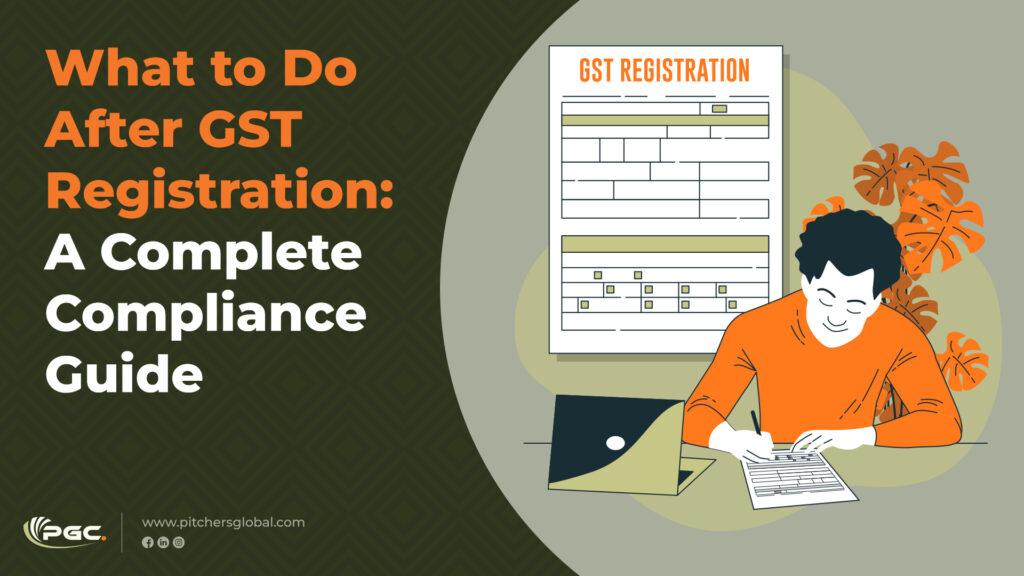If your GST registration has just been approved, congratulations! But now comes the important part—compliance. To stay on the right side of the GST Act, 2017, you must complete certain formalities and maintain regular filings. This blog walks you through each step to help you stay compliant from Day 1.

What to Do After GST Registration: A Complete Compliance Guide
Set Up Your GST Portal Login
Once you receive your GSTIN and temporary password via email:
- Visit gst.gov.in
- Use your GST number as the username and the temporary password from your email
- You’ll be prompted to create a new username and password
- Save your credentials securely—this is a one-time setup
Define Your Core Business Activity
After logging in:
- Choose one of the following business types:
- Manufacturer
- Trader
- Service Provider
- Others
- Select the option that best fits your operations
Download Your GST Registration Certificate
- Click on your profile name in the top-right corner
- Navigate to ‘My Registration Certificate’ on the left menu
- Your certificate will automatically download to your device
Display Requirements
You must:
- Display your GSTIN at your place of business
- If under the Composition Scheme, include the label “Composite Taxable Person”
- Display the registration certificate prominently at all business locations
Update Business Details If Needed
For changes in:
- Branch addresses
- Business locations
Update the GST portal with necessary documents as proof.
Also, always quote your GSTIN on:
- Invoices
- Delivery notes
- Other business documents
Complete Aadhaar Authentication & Add Bank Account
Aadhaar KYC:
- If skipped during registration, complete Aadhaar KYC now
- Alternatives: driving license, voter ID, or bank documents with photo
Bank Account:
- Add your business bank account within 45 days
- Upload a cancelled cheque or first page of your passbook as proof
Select Return Filing Frequency
- Default is monthly returns
- You can opt for the QRMP scheme based on turnover
- Choose your preference before the first filing
Filing Your First GST Return
If you applied for registration due to mandatory threshold limits:
- Apply within 30 days of becoming liable
- Include all invoices issued before approval in your first return
- Revise invoices issued during the interim period
Maintain GST-Compliant Records
You must:
- Use proper GST invoice format
- Maintain records of outward and inward supplies
- Reconcile purchases with GSTR-2B monthly
- Generate e-way bills as required
Notify all vendors and clients about your GSTIN for seamless credit flow.
Avoid Common GST Pitfalls
- Mismatch in GSTR-1 & GSTR-3B: Leads to scrutiny under Sec 61
- Failure to file for 6 months: Can result in cancellation
- Non-filing: May lead to best judgment assessment
Pay tax on time to avoid 18% interest on delayed payments.
Annual GST Returns
- Turnover > Rs 2 Cr: File GSTR-9
- Turnover > Rs 5 Cr: File GSTR-9C (Reconciliation Statement)
What to Do After GST Registration – Conclusion
Completing GST registration is just the beginning of your compliance journey. Ensuring timely updates, proper document maintenance, accurate return filing, and adherence to the rules under GST law is essential to avoid penalties and disruptions in your business operations.
By setting up a strong compliance framework and staying informed about deadlines and requirements, businesses can not only stay on the right side of the law but also build credibility and trust with clients and vendors. Regular follow-ups, proper reconciliations, and proactive compliance are the keys to smooth GST management.
Contact Pitchers Global for More!
